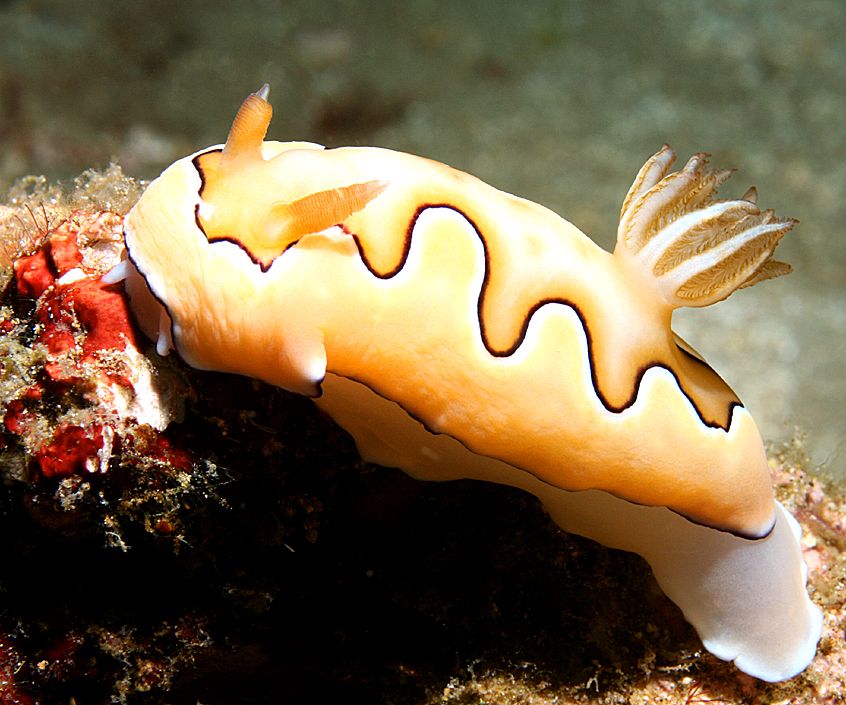Wide-angle image of French angelfish with proper balance between flash and sunlight
The use of a flash or strobe is often regarded as the most difficult aspect of underwater photography. Some common misconceptions exist about the proper use of flash underwater, especially as it relates to wide-angle photography.

Generally, the flash should be used to supplement the overall exposure and restore lost color, not as the primary light source. In situations such as the interior of caves or shipwrecks, wide-angle images can be 100% strobe light, but such situations are fairly rare. Usually, the photographer tries to create an aesthetic balance between the available sunlight and the strobe. Deep, dark or low visibility environments can make this balance more difficult, but the concept remains the same. Many modern cameras have simplified this process through various automatic exposure modes and the use of through-the-lens (TTL) metering. The increasing use of digital cameras has reduced the learning curve of underwater flash significantly, since the user can instantly review photos and make adjustments.
Color is absorbed as it travels through water, so that the deeper you are, the less reds, oranges and yellow colors remain. The strobe replaces that color. It also helps to provide shadow and texture, and is a valuable tool for creativitiy.
An added complication is the phenomenon of backscatter, where the flash reflects off particles or plankton in the water. Even seemingly clear water contains enormous amounts of this particulate, even if it is not readily seen by the naked eye. The best technique for avoiding backscatter is positioning the strobe away from the primary plane of the camera. Ideally, this means the flash will not light up the water directly in front of the lens, but will still strike the subject. Various systems of jointed arms and attachments are used to make off-camera strobes easier to manipulate.

Photo: richard-seaman.com
When using macro lenses, photographers are much more likely to use 100% strobe light for the exposure. The subject is normally very close to the lens, and the available sunlight is usually not sufficient. There have been some attempts to avoid the use of flash entirely, but these have mostly failed. In shallow water, the use of custom white-balance provides excellent color without the use of strobe.
In theory one could use color filters to overcome the blue-green shift, but this can be problematic. The amount of shift would vary with depth and turbidity, and there would still be a significant loss of contrast. Many digital cameras have settings that will provide color correction, but this can cause other problems. For example, an image shifted toward the "warm" part of the spectrum can create background water which appears gray, purple or pink, and looks very unnatural.
There have been some successful experiments using filters combined with the RAW image format function on some high-end digital cameras, allowing much more detailed manipulation in the digital darkroom. This approach will probably always be restricted to shallow to moderate depths, where the loss of color is less extreme. In spite of that, it can be very effective for large subjects such as shipwrecks which could not be lit effectively with any strobe. Natural light photography underwater can be beautiful when done properly with subjects such as upward silhouettes, light beams, and large subjects such as whales and dolphins.

Photo: hitech-dolphin.com
Although digital cameras have revolutionized many aspects of underwater imaging, it is unlikely that flash will ever be eliminated completely. From an aesthetic standpoint, the flash often adds "pop" and helps to highlight the subject. Ultimately the loss of color and contrast is a pervasive optical problem that cannot always be adjusted in software such as Photoshop.





